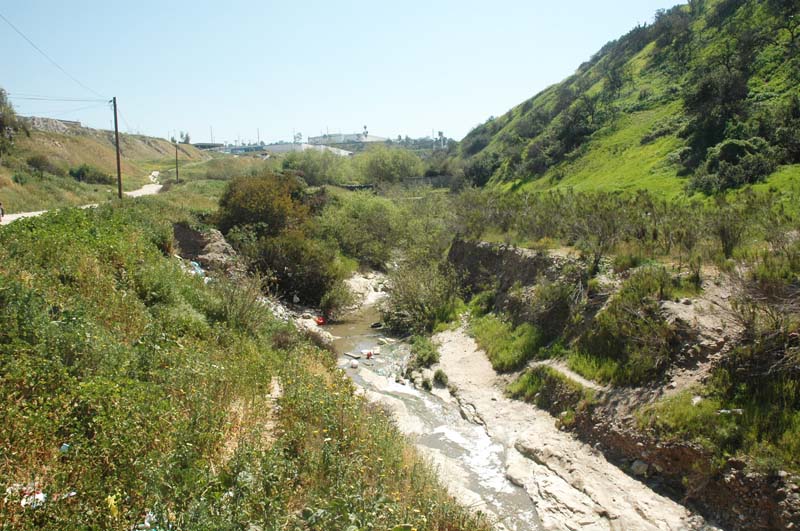|
Sediment problems in hydraulic engineering are difficult to solve.
A case in point: In 1992, two sediment-retention basins were built in the Aguaje de la Tuna
watershed, in Tijuana, Baja California, Mexico. The intent was to catch the sediments in the event of a flood, while
letting the water pass through. The objective was to
reduce sediment deposition in the mouth of the watershed, based on the belief that sediment was more damaging than flood waters.
On January 6-7, 1993, a severe and unusual flood tested the sediment retention basins, which proceeded to fill up with sediment in short order.
Apparently, the problem had been solved; however, experience indicates otherwise.
To understand what may have happened, we examine Lane's relationship,
which states that sediment discharge is proportional to water discharge.1
According to Lane, if sediment load is extracted from the flow, by any means,
and water discharge is not reduced accordingly,
the water flow becomes "hungry" and proceeds to entrain new sediment as it moves downstream. This explains the well known phenomenon of
degradation downstream of a dam.
In the event of January 1993, approximately 400,000 cubic meters of sediment were deposited
near the mouth of the Aguaje de la Tuna, despite the fact that the
sediment retention basins had retained all the sediment they could (20,000 cubic meters).2
Two scenarios are possible:
According to Lane's relationship, the second scenario appears more plausible.
In the Aguaje de la Tuna, the
"hungry water" outflowing from the sediment-retention basin
scoured a depth of about 3 m in the streambed, down to bedrock [see photo].
Thus, the utility of building a sediment-retention basin,
without providing for concurrent water storage, is open to question.
1
Lane, E. W. 1954.
The importance of fluvial morphology in hydraulic engineering.
Proceedings, ASCE, Vol. 81, Paper No. 745.
| ||
|
